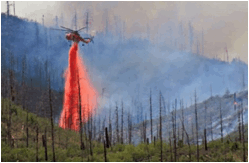Mars Rover ‘Curiosity’ Readies For Tricky Landing, With Laser In Tow
 NASA’s most advanced Mars rover, Curiosity, is a little under two weeks away from its scheduled landing on the Martian surface.
NASA’s most advanced Mars rover, Curiosity, is a little under two weeks away from its scheduled landing on the Martian surface.
Onboard the 10-foot-long, 9-foot-wide, 7-foot-tall rover (NASA’s Jet Propulsion Laboratory notes it is about the size of a compact SUV), are 10 different instruments, among them a military-grade laser designed to vaporize rock samples to better analyze their composition.
The 20-pound laser and telescope known as the Chemical and Camera instrument, or “ChemCam,” is due to be fired-up on around August 10, according to scientists at Los Alamos National Laboratory in New Mexico, where the instrument was originally developed (full story).


President honors lab researcher
 A young Los Alamos National Laboratory scientist, Amy J. Clarke, is among the honorees that President Obama named as recipients of the Presidential Early Career Award for Scientists and Engineers (PECASE).
A young Los Alamos National Laboratory scientist, Amy J. Clarke, is among the honorees that President Obama named as recipients of the Presidential Early Career Award for Scientists and Engineers (PECASE).
“Discoveries in science and technology not only strengthen our economy, they inspire us as a people,” Obama said. “The impressive accomplishments of today’s awardees so early in their careers promise even greater advances in the years ahead.”
Read the White House announcement here! (Full story)
Read the White House announcement here! (Full story)
Two Los Alamos National Laboratory scientists are among the team recently funded to explore ways tocreate the precise immune factors needed for effective vaccines against HIV.
The Duke University-led consortium will largely concentrate on inducing broadlyneutralizing antibodies that can prevent HIV-1 infection, as well as on generating protective T-cell and innate immune system responses (full story).
This story also appeared in R&D
Silver Nanoclusters Spot Single-Base Mutations In DNA
 A new inexpensive method based on fluorescent silver nanoclusters can quickly detect and identify base switches in a gene (J. Am. Chem. Soc., DOI: 10.1021/ja3024737)
A new inexpensive method based on fluorescent silver nanoclusters can quickly detect and identify base switches in a gene (J. Am. Chem. Soc., DOI: 10.1021/ja3024737)
If doctors know the sequence of a mutated gene, they not only can diagnose disease but also find the best medication to treat it, says James Werner of Los Alamos National Laboratory. Currently, detecting single-base mutations involves either multistep enzymatic reactions or DNA probes that bind specific gene sequences. While these probes can spot a gene with a mutation, they can’t tell which single base has replaced the original one (full story).
Energy security for the United States is a rapidly growing mission of the Los Alamos National Laboratory. After the breakfast meeting, a group of community members were given a tour of two areas of the lab devoted to the energy security mission.
The first stop on the lab tour was the Fuel Cell Laboratory where Research Scientist Tommy Rockward described his current research into improving fuelcell efficiency (full story).
Wallace speaks to community leaders
 Terry Wallace, the principal associate director for global security at the Los Alamos NationalLaboratory, briefs community leaders at a breakfast at the lab Tuesday. Juan Griego, the deputy director at the Los Alamos Site Office, also gave a briefing. Afterward, leaders went on numerous tours at the lab (full story).
Terry Wallace, the principal associate director for global security at the Los Alamos NationalLaboratory, briefs community leaders at a breakfast at the lab Tuesday. Juan Griego, the deputy director at the Los Alamos Site Office, also gave a briefing. Afterward, leaders went on numerous tours at the lab (full story).
To subscribe to Los Alamos Report, please send an e-mail and include the words "subscribe losalamosreport" in the body of your email message; to unscubscribe, include "unsubscribe losalamosreport".
Please visit us at www.lanl.gov











































